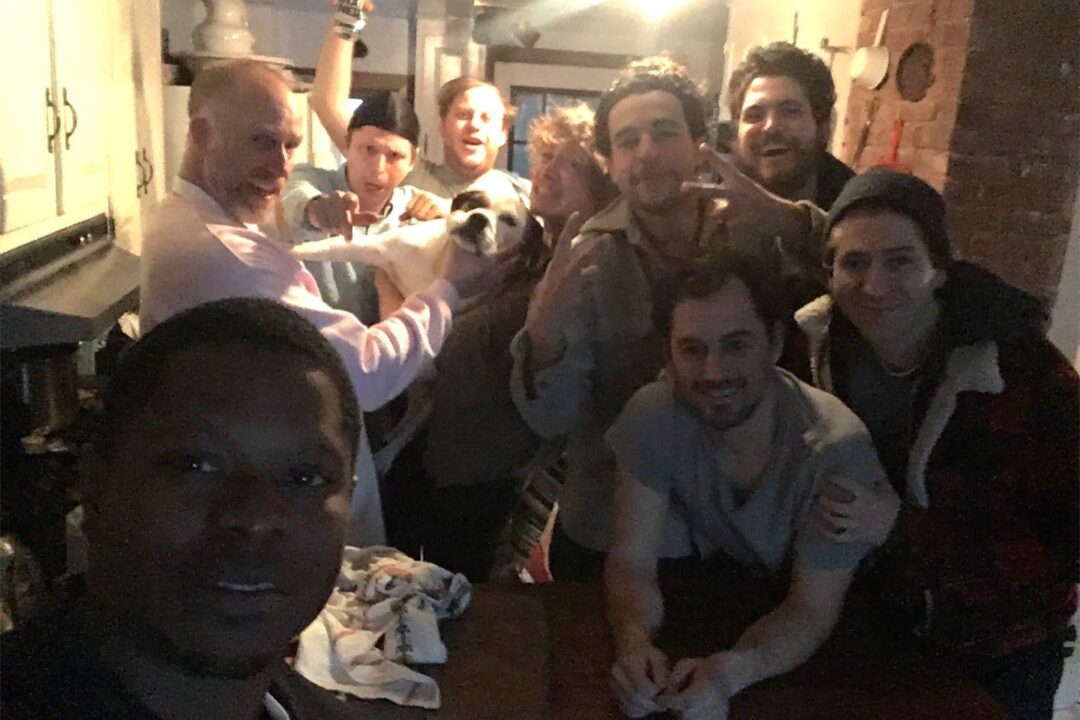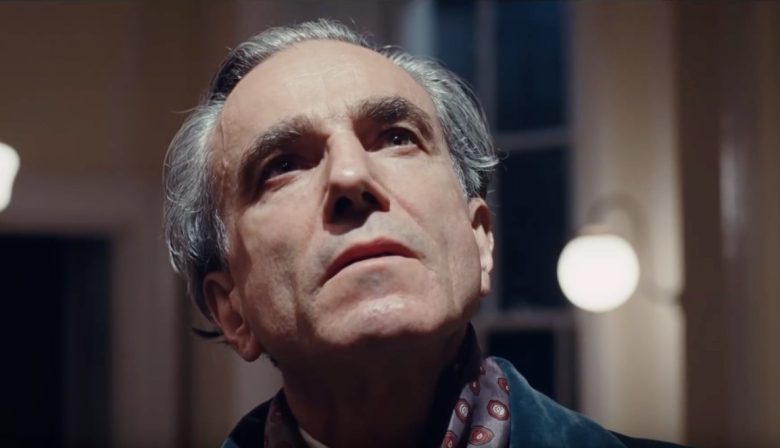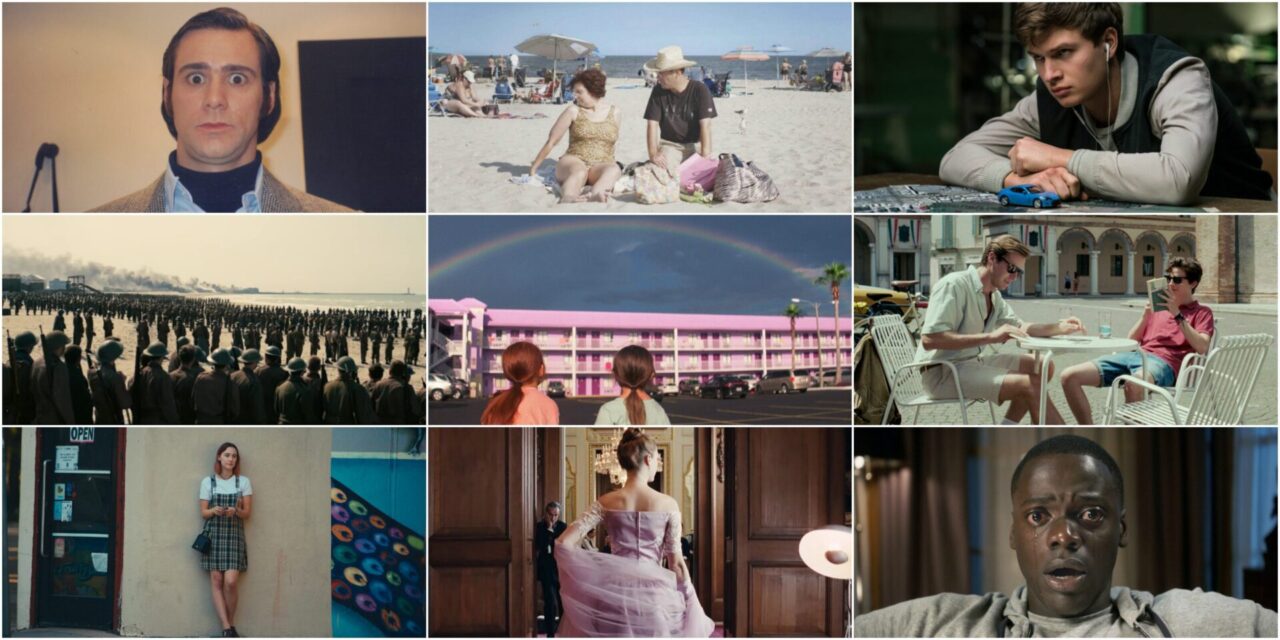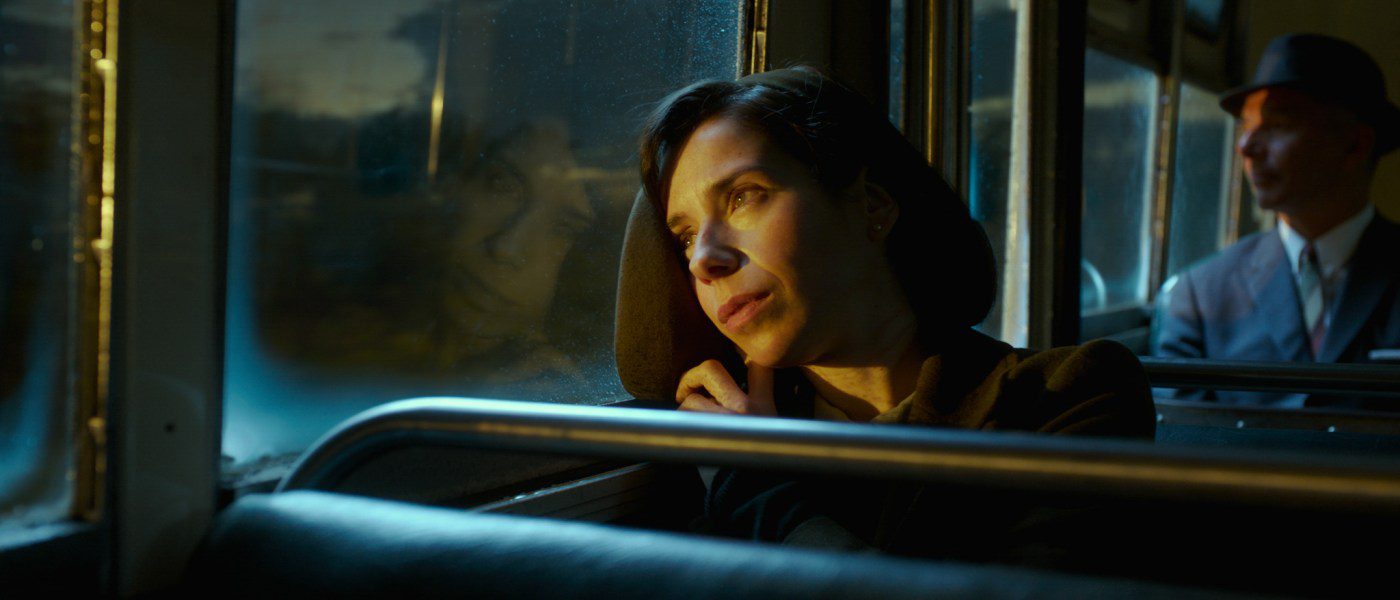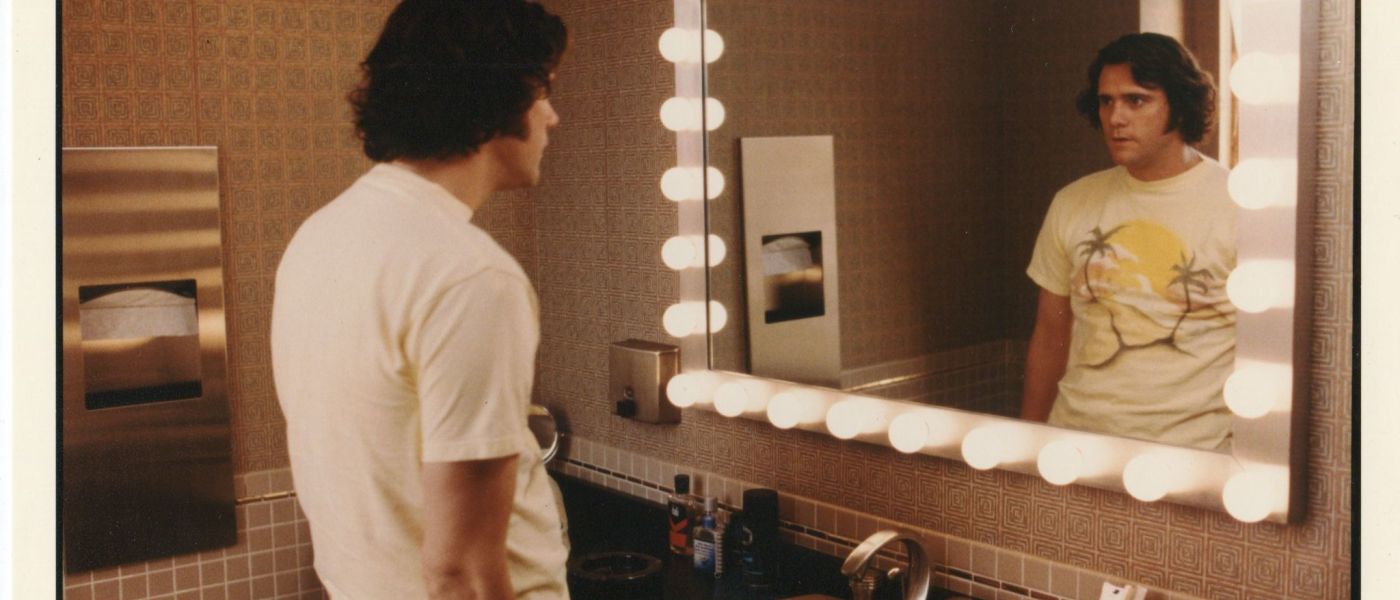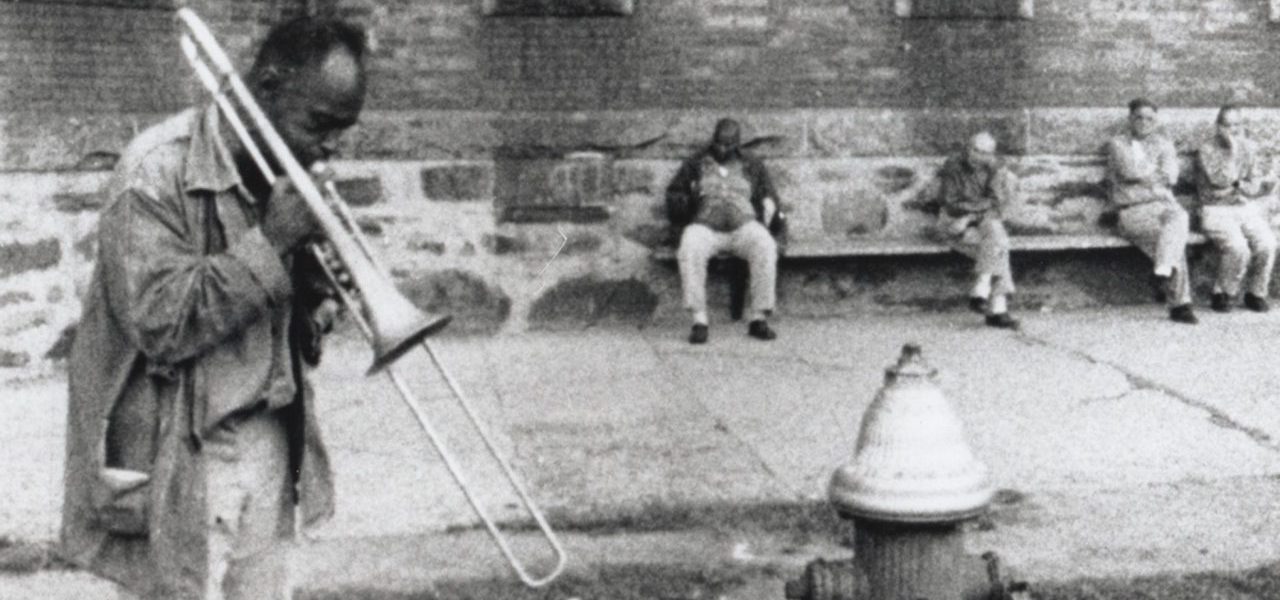'Tyrel' Sundance Review: Racial Discomfort Explored in a Booze-Fueled Cabin Retreat With the Boys
We've all had that feeling of being out of place, of feeling uncomfortable in a group of people that you don't know.
But when that feeling of exclusion is fueled by what one attributes to be the isolation of their race, that feeling becomes an even more palpably disturbing one. Racial identity and tension also happens to be a subject matter white-hot to today's cultural conversation and is the concept that writer and director Sebastián Silva explores in his latest film, Tyrel.
The story of a man of color feeling out of place during a drunken weekend away with the boys, the easy first comparison to make might be to last year's smash horror flick Get Out – a comparison not far off when comparing both movies premises' alone. But when all is said and done, Silva's micro-budget movie doesn't deliver on any of the tension-filled threads that it teasingly dangles, which is only a little bit of a let-down knowing that Silva can do horror movies as seen in 2013's Magic Magic starring Juno Temple and Michael Cera.
However, when one sifts past the disappointment of essentially non-plot, one is able to see that Tyrel might be Silva's most rich character study yet. Silva, who shoots all of his own movies and handheld, maneuvers around freely and untethered to capture raw, authentically felt performances from each of his actors, who are among some of the best young actors working in film today. And while Tyrel also feels like the most limited in scope compared to his other films, this style of quick and dirty film-making lends well to Silva's preference to make movies with his friends on the cheap.
An altogether dude-fest of a movie, Tyrel explores what it feels like to be the odd man out. Tyler (Jason Mitchell) – not Tyrel, as new acquaintances mistakenly call him upon botched introductions – agrees to a weekend away with friends of a friend (Christopher Abbott) where he meets the birthday boy (Caleb Landry Jones) and rest of the guys, all buffoonish dudes fuming out leftover college partying as they pour whiskey and roll joints, leaving Tyler to smile sheepishly along.
Those who have seen Silva's movies know that he works quickly and cheaply, so it's hard to knock a film like this for being anything more than a time spent with friends.
More friends arrive (all white, or Chiléan) including Alan (Michael Cera), a wealthy jerk who touches on race in the movie's more obvious moments – he wears a wet-suit and jokes to the group that he's the second person of color at the party – to which Tyler's discomfort is felt further, prompting him to outrace the gang in consuming more Irish coffees and joints and end up in dizzying paranoia.
Tyrel executes on the sense of isolation and feeling out of place, but the evidence supports that the movie isn't exactly politically charged with overt racism (thinly veiled racism?) that the friends evoke. Really, frat-boy machismo energy is the main offender here, and I would actually be hard-pressed to find a woman who didn't feel isolated themselves watching this male-aggression movie in what might be an ironic twist. Notably, Tyrel's entry into this year's U.S. Dramatic Competition category at Sundance makes Silva the first person to have a movie play in all six major categories at the festival, which might end up being the film's most noteworthy accomplishment.
86 min. 'Tyrel' is not yet rated.
'Phantom Thread' Review: A Beguiling Romance With a Twist
Love can be quite intoxicating. So can Paul Thomas Anderson movies.
Anderson's natural cinephile sensibilities have allowed him to make some of the very best films of all time. Seemingly drawing straight from the well of pure cinema, his films are dazzling masterpieces that seep deeply into the audiences’ subconscious and only get better the more they are thought about.
Set in the high fashion world of post-war London, Phantom Thread is the story of an obsessive dressmaker (Daniel Day-Lewis) and the woman he meets who tames him until a rocky disruption ensues that forces each to see how essential they are to the other. An absolutely gorgeous work and a rich feast for the eyes, this period piece is one that deserves to be seen on the big screen.
One thing that separates Phantom Thread from Anderson's other films is that it's Anderson himself who's behind the camera for this movie, here he assumes director of photography duties as well as directing. When you're able to operate the camera, pick the lenses and make your own lighting decisions, you are exacting full control to execute your vision, as he does here.
Reynolds Woodcock (Day-Lewis) knows a thing or two about the necessity of control when it comes to creating his works of art. And with that, comes his need for perfection, irritable if otherwise. Mercilessly meticulous in realizing his vision, it's his sister Cyril (Lesley Manville) who takes to tempering his frustrations while she helps him run the business. Woodcock may, in fact, be the character that most closely mirrors Anderson himself, the commentary on his own artistic sensibilities (and shortcomings) as a perfectionist auteur. He shows that creating such beautiful pieces often comes from a joyless place.
If we are to believe [Daniel Day-Lewis'] statement that this is indeed his final screen performance, then it is a fantastic one to leave behind.
This makes the introduction of Alma (Vicky Krieps) one that inspires Woodcock. He has had other muses before – one is seen before the arrival of Alma – but it's Alma that we find is his match, and whose presence in his life of consuming routine and ritual slowly frays at the seams. Woodcock tries to live his life of narcissistic vanity in his undisturbed artistry, but Alma disrupts this vision before the movie reveals its screwball story that forces Reynolds and Alma to realize how much they need each other.
His most reduced story yet, Phantom Thread is carried by the beguiling performances of the two lovers. The performance that Day-Lewis exacts as Woodcock in control and restraint is as exact as any craftsman. If we are to believe his statement that this is indeed his final screen performance, then it is a fantastic one to leave behind. Vicky Krieps as Alma is a presence that can suck the air right out of a room, her face communicating exactly what she's thinking.
The allure of a PTA film is that there is always more then meets the eye. Interestingly, this is a detail that is manifested in the film- Woodcock sews names and words into the linings of his pieces, blesses them or just a creates a sneaky secret that no one will ever know. These codes can leave any critic endlessly intrigued.
Phantom Thread turns out to be a phantom of a film itself, leaving a mysterious and lasting impression that will continue to occupy the mind long after its watch. Creeping darkness and growing tension make this love story one that will sit quite well next to its peers.
Phantom Thread is 130 minutes. Rated R for language. Now playing at the Landmark and ArcLight Hollywood.
https://www.youtube.com/watch?v=xNsiQMeSvMk
Ryan's Top 10 Films of 2017
Any year in which I see even just one film that blows me away, I consider being a "good" year in film. Looking back on 2017, I can once again re-affirm this belief to be true. From the smart, big-scale event movies from stylish auteurs, to the unexpected indie breakouts that also counted as those directors' debut feature films, to dazzling Awards-aimed movies that left me totally floored, I am happy to say that this year in film was as powerful as it was eclectic. Below are the top ten films that defined the year in movies for me, and ones that I hope you'll consider checking out.

10. I Don't Feel at Home in This World Anymore
I'm including I Don't Feel at Home in This World Anymore on this list for a few reasons. Foremost, it holds a special place in my heart as it was the Grand Jury Prize winner (Sundance's top award) that I managed to see at this year's Sundance Film Festival. Also, I don't believe everyone saw this wacky blood-bath of a movie, which I'd love to put on more people's radars. The directorial debut from Macon Blair is a mash-up of Tarantino wit and violence but also manages to be a truly funny and heartfelt movie with a fantastic lead performance from Melanie Lynskey. An excerpt from my original review below:
Macon Blair’s comedy-thriller I Don’t Feel at Home in This World Anymore won the coveted Grand Jury Prize after leaving audiences in stitches with its raucous tonal mixings of genuinely side-splitting comedy and shock-violence action that plays like an indie grindhouse comedy. [It's] a true belly laugh of a film, and the perfect choice for when you want to watch a weirdly hilarious and insane movie.
Read our full 'I Don't Feel At Home In This World Anymore' review here.

9. Jim & Andy: The Great Beyond - Featuring a Very Special, Contractually Obligated Mention of Tony Clifton
I first saw Man on the Moon, the 1999 Andy Kaufman biopic starring Jim Carrey as the late-comedian, in high school. But what I, along with everyone else who saw that film, didn't see were the lengths that Carrey went through to play Kaufman, as when the cameras would cut, he would continue to "be" Kaufman in a performance that bordered between method and madness. Now a new documentary, Jim & Andy: The Great Beyond, reveals the previously unseen footage that was shot behind-the-scenes in which Carrey's reality-bending antics disrupted the production at every turn. Countered with a present-day and very-bearded Carrey, in which he entertains the idea that his eccentric aspirations served as fantasy escape at a time when Carrey’s star power was burning brightest, Jim & Andy: The Great Beyond is more than a making-of movie; it's one of the most interesting explorations of an artist and ego exploring identities and how we construct them. And with Carrey in the driver's seat, it's hilarious.
Read our full 'Jim & Andy: The Great Beyond' review here.

8. Lady Bird
I might have related to Lady Bird more than any other film this year and looking at its numbers to date, I know I’m not alone. The debut feature film from director Greta Gerwig received the year’s highest Rotten Tomatoes rating and has edged ahead of last year's Best Picture winner, Moonlight, to also become A24’s highest grossing film. The semi-autobiographic story of a spunky high school senior is one of the most sincere, funny, and heartfelt films of the year – just like Gerwig herself. An excerpt from my original review below:
"Lady Bird is infectiously funny and so pure-spirited that it will leave you emotionally complete. The laughs ring true, and so does the heartache and despondency. If directorial debuts are the best revelation of the true spirit of the filmmaker, then it should come as no surprise that Greta Gerwig’s first feature film soars."
Read our full 'Lady Bird' review here.

7. Baby Driver
Edgar Wright returned to the big screen this year to make his biggest studio movie to date, which was also one of the most impossibly cool films I saw in theaters all year. An adrenaline-pumping asphalt-burner from the opening scene, Baby Driver tells the story of Baby (Ansel Elgort), a young getaway driver who’s a devil behind the wheel, but only when he queues up the perfect song on his iPod for his car chases – an element that Wright has endless fun playing with as he himself is known for creating perfect musical moments in his films. If you didn't catch this blisteringly cool film in theaters, then I recommend queuing up Baby Driver as soon as you can – and sitting as close to the screen as you can when you do. Don't forget to buckle up.
Read our full 'Baby Driver' review here.

6. Dina
I missed seeing this documentary at the Sundance Film Festival (where it would go on to win the Grand Jury Prize in the Documentary category). I subsequently proceeded to miss it when it screened at LA's NEXT Fest (presented by Sundance), and finally missed all of the film’s press screenings. When I finally got my hands on a screener DVD (thank you, anonymous Academy member), I expected that I had missed my opportunity to see this film play in the best setting possible. What I soon realized as I began watching this gem of a film is that the magic of Dina, a documentary following an eccentric woman and her evolving relationship with a Walmart door-greeter, is in its intimacy, which resonates in settings of all sizes. Dina is beautiful in both its visuals – it's restricted and locked down camera with zero movement makes it feel so deliberate as to feel like a narrative comedy – and in its breakthrough story revealing the human condition of wanting to find love, and be loved in return.

5. Get Out
I didn’t get around to seeing Get Out for what was likely weeks after word-of-mouth had already surrounded the film. But when I finally headed to theaters to see it, I was stunned to see that first-time feature filmmaker Jordan Peele had masterfully executed this horror flick for the masses, expertly blending the very best cinematic elements to create one of the most fearless, bonkers, head-spinningly inventive films of the year. Get Out also aspired to be more than throwaway popcorn-entertainment, wrapping up a silly scary movie premise in a politically-relevant message that successfully transports audiences of all kinds and colors into the experience of being a person of color in today's America, which can bring a profound helplessness that is the scariest experience of all.

4. Dunkirk
It's no revelation to say that Christopher Nolan is one of the most important people making movies of our time. The mind behind such grandly ambitious blockbuster films as The Dark Knight trilogy as well as wildly inventive films of Kubrickian inspiration such and Interstellar, Nolan continues to advance the art form with each film he makes. Dunkirk is just the latest example of what makes a Nolan film absolutely brilliant: complex narrative structure, in-camera action sequences, and all captured on the biggest film cameras made while still being four-quadrant films. Telling this war story of helpless British forces awaiting rescue in triptych fashion, capturing three different moments of time in three different time relations makes Dunkirk a gamble of a story. It should be recognized that Dunkirk stands as the most riveting, most immersive, most ambitious film of the year.
Read our full 'Dunkirk' review here.

3. Call Me By Your Name
Based on the novel of the same name, Call Me By Your Name manages to do the impossible things that often make a novel so unique and special, which is to bring the subtleties of the page to life in such a detailed and exact way that it not only elicits the tone but creates an intimate experience between reader and material. Taking place over one summer in the Italian countryside in 1983, the film follows young teen (Timothée Chalamet) as he finds himself slowly courting the older student (Armie Hammer) who comes to stay with his family to study under his father (Michael Stuhlbarg), and finds the feelings are soon reciprocated. Moments of shared bike rides, swims, and more deliver some of the finest moments captured in film. Stuhlbarg gives one of the best final monologues in film, Hammer has never been better, and Chalamet delivers a brilliant performance that should usher him into being one of tomorrow's brightest stars. One of the most beautiful films of the year in both visuals and story, Call Me By Your Name is one of the finest made films of the year.
Read our full 'Call Me By Your Name' review here.

2. Phantom Thread
Paul Thomas Anderson (known simply as PTA by his fans) seems to draw straight from the well of pure cinema when he makes his films, leaving me an intoxicated mess each time (making him the best bartender in town for my money). From the very first frames of his latest film, Phantom Thread, I felt myself turning into pure mush, each frame of his high fashion couture world more beautifully composed than the next. Set in the fine, posh world of post-war London (a full swivel away from the pot-stenched Gordita Beach of his last film, Inherent Vice), Phantom Thread is PTA's most reduced story in quite some time. At its simplest, it's a love story between a man – renowned yet obsessive dressmaker Reginald Woodcock (Daniel Day-Lewis) – and a woman – beguiling waitress Alma (Vicky Krieps) who he meets during a stop in the countryside. But like any PTA film, there's so much more than meets the eye, thematically and otherwise. Beyond this classic love story that evokes the classic feel of a David Lean or Hitchcockian romance, exacted with beautiful camera composition (in which PTA assumes camera operating duties) and captivating performances (Day-Lewis' final film, if you believe his retirement claims), is a creeping darkness and growing tension that leaves a mysterious and lasting impression that still occupies my mind. Like all PTA films, it's one that I know that I will be returning to multiple times.

1. The Florida Project
Imagine if The Little Rascals took place within a string of budget motels located outside Disney World and you have The Florida Project, the most triumphant statement on childhood since 2014’s Boyhood. Following a group of youngsters over one unsupervised summer as they run, play, and altogether cause mischief around the extended stay motels where they live, writer and director Sean Baker’s second feature film is a masterful exercise in dichotomy. Juxtaposing beautiful moments of kids running towards rainbows and celebrating fireworks in the low-income environment where vices and dangers loom large, Baker reveals the fantasy against the harsh reality of their lives. Willem Dafoe, as maintenance worker Bobby, is subtle and stunning. But it’s the spunky six-year-old Brooklynn Prince who steals the show as spirited youngster Moonee, whose boundless energy reminds us that the make-believe and innocence of childhood inevitably ends, but should be cherished while it’s here.
Read our full 'The Florida Project' review here.
Honorable Mentions: mother!, Jane, Logan Lucky
Not yet viewed: Good Time, The Square, Loveless
'All The Money In the World' Review: True Story of Kidnapped Getty Heir is Brought to the Big Screen
It's not likely that you've heard of All the Money in the World, the true-life story of the kidnapping of a Getty heir, without also hearing of the off-screen drama that has accompanied the film.
Sexual misconduct allegations against the film's main star – Kevin Spacey – sent the movie into crisis mode only weeks before the film was scheduled to open.
In an unprecedented move, director Ridley Scott decided to cut Spacey out of the movie altogether – a head-spinning decision since the actor had not only completed all of his scenes but because Scott announced that the film would also still meet its scheduled release date in the coming weeks. This feat would be accomplished by re-shooting the movie with Oscar-winning actor Christopher Plummer in Spacey’s vacated role. This race-against-the-clock, behind-the-scenes story no doubt has as much suspense as the material on which it's based.
The inevitable question that the movie won't ever be able to escape from is, how does the film, also starring Michelle Williams and Mark Wahlberg, hold together? With a screenplay by David Scarpa, based on a novel by John Pearson, All the Money in the World holds together surprisingly well. This big studio movie is certainly ambitious in scope, as Scott takes the film across continents with action, period piece designs, and a smart screenplay that provokes the audience to think. All the Money in the World tells the true story of kidnapped sixteen-year-old Getty heir J. Paul Getty III (Charlie Plummer) and the ransom race led by his mother, Gail Harris (Williams) and family advisor Fletcher Chase (Wahlberg) against the foreign kidnappers as well as her miserly father-in-law, J. Paul Getty (Christopher Plummer, no relation to Charlie).
Ironically, the shared symbolism is that the story of the former star of 'All the Money in the World,' like Getty himself, reflects powerful men being brought to their knees.
The drama, of course, comes in J.Paul Getty’s decision not to pay Paul’s $17 million ransom. For a man who at one time was considered to be "the most wealthy man in the world," paying the ransom for the safe return of his grandson would seem to be the obvious decision. It's a psychological study that Scott is interested in exploring here, showing Getty as a man who didn't get to be where he was by conceding or being bested in any way, whether in business or in a hostage negotiation with his family. As Getty, Plummer brings light-hearted, unaffected poise and power to his character. Simultaneously confounded and enraged is Gail, who can't understand why this man won't pay for her son’s safety. Williams' resilience and focus keep the film moving forward.
For a hostage movie, All the Money in the World isn't as much white-knuckle tension as it is more a broad character and period piece. There are certainly a number of moments that will make impressions on viewers, and the final sequence of the film in which Getty arises out of bed to take a precious painting off a wall is one of the best sequences in cinema I've seen all year. It reminds us that Scott is a master of his craft, and at eighty-years-old, is one of the few filmmakers who not only commands a production as big as this but can handle any obstacles that would end the career of other filmmakers. Ironically, the shared symbolism is that the story of the former star of All the Money in the World, like Getty himself, reflects powerful men being brought to their knees.
132 min. 'All the Money in the World' is rated R for language, some violence, disturbing images and brief drug content.
https://www.youtube.com/watch?v=KXHrCBkIxQQ
'Star Wars: The Last Jedi' Review: It's Still a Jedi-Level Task to Balance the Old With the New
I am very aware that my writing a review for this movie may largely be a pointless exercise.
The good majority of you may not even make it to this sentence, whether for very worthwhile reasons of not wishing to come upon any spoilers (none here) or just already knowing that you'll be seeing this movie anyway, so why bother with cluttering your head with someone else's opinions ahead of time? The valiant film critic presses on in the hopes that providing primer thoughts will enhance your epic viewing experience.
Actually, here's a spoiler: in Star Wars: The Last Jedi, there are these things called "porgs" which are these little land creatures with the biggest eyes you've ever seen and cutest caw you've ever heard. These porgs live on the island where we last saw new Jedi Rey (Daisy Ridley) locate the mythic Luke Skywalker (Mark Hamill) in hopes of having the recluse train her in the ways of The Force at the end of this trilogy's reboot, The Force Awakens. Seriously, these little things' DNA seems to be "the most freaking adorable little things that exist in all of space," – like if a penguin mated with Grumpy Cat (eat your heart out, BB-8).
But what are the porgs' relevance to The Last Jedi, a mostly fan-servicing second act in the rebooted trilogy? Well, their inclusion to this story points to a line that Dark Side of The Force pledge Kylo Ren (Adam Driver) speaks in the movie (don't worry people, it's in the trailer too): "Let the past die." While Kylo's moody plea to get Rey to leave all previous allegiances to the Rebellion, the Jedi – whatever have you – and join him in a galactic takeover, it's a sentiment that couldn't be further from the commercially minded intentions that Emperor Disney has laid out in their new ownership of the Star Wars universe. While the porgs might be cute eye candy to add another level of new to this story, the story itself is nearly note-for-note exact to where George Lucas' original trilogy tracked with The Empire Strikes Back, here remixed for a new generation. In this reboot in this galaxy of "far far away" land, we know where we've been and we know where we're going.
As a lifelong Star Wars fan (who brought his light-sabers into the theaters when the prequels were released), I'm happy to report that The Last Jedi doesn't not satisfy Star Wars fans.
Much like Empire, The Last Jedi also advances two different pieces across the chess board: the story of young Jedi-in-training Rey and the deterioration of the Rebellion fighters, here matched against General Hux (Domhnall Gleeson) and Supreme Leader Snoke (a CGI Andy Serkis). However, the struggle is in the great balancing of all things in this universe from all moments in time: the balancing of the old and the new, of clunky duty and inspired new discovery. To this end, more characters are added to this fight: There's the return of our old-old favorites – Luke Skywalker (Mark Hamill), sister General Leia Organa (Carrie Fisher, in her final role with much to do); our new-old favorites – Jedi-in-training Rey (Daisy Ridley), Finn (John Boyega) and Poe (Oscar Isaac) who continue to lead The Resistance; and our new-new favorites – Vice Admiral Amilyn Holdo (Laura Dern), huckster DJ (Benicio Del Toro) and Resistance fighter Rose (Kelly Marie Tran). All characters continue to lock into the grid in neat configurations, but like a kid with their growing number of toys, when you go to pick up one set of action figures, the quicker you must also put them down to keep playing with the rest. And really, the table is only so big to fit everything to begin with.
It's all a task that would make a service droid like R2-D2's head spin. But Jedi Master Rian Johnson, who has announced that he will be writing and directing a new trilogy of Star Wars films after The Last Jedi (are new faces teased in this film?), shows he has enough directorial vision and force to take over piloting duties the J.J. Abrams got off the ground with The Force Awakens (interestingly enough, Abrams is set to return to land the ship with the conclusion of the final film). It's only a bit of a let-down to feel how Disney-fied the Star Wars world now is (it's a lot funnier then I thought it would be), really Johnson is beholden to keep this ship on its trajectory of another classic Joseph Campbell penned hero's journey.
At the end of the day, I guess I'm not trying to say that The Last Jedi is not a fun space epic. As a lifelong Star Wars fan (who brought his light-sabers into the theaters when the prequels were released), I'm happy to report that The Last Jedi doesn't not satisfy Star Wars fans. In fact, there are a good number of images and sequences that suck the air right from the room and are sure to make fans do back-flips in their chairs. While it feels so fully-stuffed that it all might just explode like any of the endless spaceships here do and whose remains must now float and litter the world above, The Last Jedi, like its porgs, adds enough new fun here to reach its end.
. 'Star Wars: The Last Jedi' is rated PG-13 for sequences of sci-fi action and violence.
https://www.youtube.com/watch?v=Q0CbN8sfihY
'The Shape of Water' Review: Let Yourself Be Swept Away in Del Toro's Fantasy Romance
Imagine the timeless love story Beauty and the Beast set in 1960s Cold War America, and the beast is an amphibian-man desired by the U.S. and Russia for weapon-utilizing purposes.
Here you have director Guillermo Del Toro's latest film; the lovely, The Shape of Water, or the basic outline, at least. The special ingredient in this affectingly heart-filled film is its achingly dutiful ode to classic romantic movies of the past. The Shape of Water feels like the ever-magisterial Del Toro was swept up in the same intoxicating aroma that spellbound director Damien Chazelle with his Hollywood backlot-homage, La La Land. Del Toro, of Mexican heritage, is also fully channeling not just the American Studio romance movie but waves of French cinema as well, fully-embracing the cinema of old to tell this story of new. This holiday season, let the feel-good, achingly beautiful The Shape of Water color your heart anew – even if that color is a sea-foam green much like our fin-filled friend.
Audiences should know (and not mind) that in the classical tradition, this period piece does away with an intricate storyline for a more classic, familiar one. And why should it be anything but a simple tale of two star-crossed lovers? Anything more would weigh down this otherwise beautifully buoyant film, whose best quality is its lightness which keeps the fireplace warm. This tone and spirit stem directly from the performance of Sally Hawkins who plays Elisa, a mute (not deaf) janitor who works at an underground facility in 1960s Baltimore. Meek in demeanor as she works alongside her co-worker, Zelda (Octavia Spencer), she's clearly gotten comfortable with her unnoticed lifestyle. She silently and deftly soft-shoes through the halls to the film's beautifully cinematic score (Del Toro has said that The Shape of Water was first designed to Jon Brion's score for Punch-Drunk Love, his favorite Paul Thomas Anderson film, if that clues you in on what Del Toro is trying to do here.)
The film is about two creatures who won't let anything or anybody stand in their way. And in this day and age, that's something that should be applauded.
Living her routine lifestyle, which includes waking up in her one-bedroom apartment, enjoying herself in the tub, and clocking in for work, suddenly become upended when Elisa actually meets "the asset" – the Amphibian Man resembling the creature from the Black Lagoon. A timid courting begins between both silent creatures. She teaches him to sign simple phrases to communicate while the Amphibian is chained in his iron-cast tank while also enjoying late-night lunches of hard-boiled eggs and jazz records.
But as we all know, the kindred-spirits-finding-companionship story needs its villain, which Michael Shannon deliciously delivers as Strickland, a hell-bent overseer of the facility and self-appointed torturer of the asset. The film plays to its expected path – Elisa sets in motion a plan to break the creature free with help from her also sheepish illustrator neighbor (played by a wonderful Richard Jenkins – seriously, this whole cast rocks!). Conventional and comforting, but also adventurous and erotic (sensual scenes between Elisa and the Amphibian man are not shied away from), The Shape of Water is everything we wish the film would be.
Del Toro has shown with his previous work that he can create some of the best fantasy-creature movies ever made, like the aforementioned modern-day masterpiece Pan's Labyrinth which showed his dark extraction of children's fantasy, as well as comic book shoot-em-ups like Hellboy. But where those films were considerably more action-filled, The Shape of Water is decidedly affection-filled and sure to imprint a soft smile on doting audience's faces. Do yourself a favor this holiday season, and let yourself get swept away in the lyrical and loving The Shape of Water with a loved one in theaters. For a film about two creatures who won't let anything – politics, danger, or the fact that they're two different species – stand in their way, in these otherwise cynical times that's something that audiences should let themselves snuggle up to.
119 min. 'The Shape of Water' is rated R for sexual content, graphic nudity, violence, and language. Opening this Friday at the Landmark and ArcLight Hollywood.
https://www.youtube.com/watch?v=368_ovPsJk8
'Jim & Andy: The Great Beyond': Jim Carrey Conjures Kaufman
Jim Carrey has played a lot of out-of-this-world characters in his lifetime, but devoted audiences are likely unaware of the one role that Carrey committed so deeply to playing that he remained in character for the entirety of the film’s shoot (even when the cameras stopped rolling). Such a thing would be nearly impossible to imagine. Right?
Audiences will now be able to witness this feat in the new documentary, Jim & Andy: The Great Beyond - Featuring a Very Special, Contractually Obligated Mention of Tony Clifton. Jim & Andy captures the period of time after the newly minted A-list movie star wrapped three iconic movies that would define his career: Ace Ventura: Pet Detective, The Mask, and Dumb and Dumber. Carrey followed those hits by transforming (with Herculean might) into Andy Kaufman in the 1999 biopic, Man on The Moon.
The film reveals that Carrey simply let Andy "take over" to make Man on the Moon and that he was merely "the vessel" channeling the spirit of Andy Kaufman. It's amazing to see the accompanying footage of Carrey uncut, as he upends the production at every turn as the antic-prone Kaufman, torturing the crew to our gleeful delight. It's more than a treat to see every shade of Kaufman that Carrey conjures up: there's bashful and trepidatious Andy, meek and bumbling as Latka the Foreign Man ("Thank you very much"), there's tantrum-throwing Andy who bemoans Man on the Moon director Milos Forman as well as Studio execs to their faces, there's rabble-rouser Andy who tortures Kaufman's former faux-foe, wrestler Jerry Lawler, incessantly (which Lawler takes in stride, until he doesn't), and of course, his most taxing persona, the repugnant lounge-act and drunkard Tony Clifton, who stirs the most agitation of all – much to the audiences delight and Kaufman's giddy.
Accompanying the on-set footage is a long-form interview with present-day Carrey. Wearing a leather jacket and Burning Man beard, he recounts this chapter of his past with enough distance to provide worthy insight. The juxtaposition of seeing the Carrey of now recount the antics of the Carrey of then proves an interesting mind shift. The new Carrey is seemingly content with his place in the universe and attempts to rationalize the weight of human depression and ego. This makes for a profound meditation on celebrity and ego perception, a fitting study for this internet age.
Ultimately, 'Jim & Andy' is a reflection of a time spent in a sandbox, safely; but now the toddler is wise enough to realize that there's no stopping the sand from slipping through the hourglass, and finally trying to come to peace with that.
The events leading up to Carrey's inevitable stardom left him so spiritually unfulfilled that battles with depression soon followed. So it comes as no surprise that the lure of playing Kaufman (who deconstructed and dismantled the idea of comedy itself) provided solace and the opportunity to exercise all of the things Carrey was conflicted about, fame and performance, within a performance itself. This escape play-therapy vanishing act doesn't appear to be stroking his own ego as much as it shelters it, hiding it away entirely.
Perhaps just as amazing is the accompanying behind-the-scenes footage and that so much of it exists. We learn that Universal (the film's studio company) commissioned the footage to be shot for press kit use but ended up shelving it after they thought that people seeing Carrey wreak havoc on set would make him look like "an asshole." Ultimately, the footage was found in Carrey's private Los Angeles office by filmmaker Spike Jonze (a producer on the film) who recognized that there was a movie to be made in this mad peek behind the curtain.
Much like the actor, the role the actor played, and the means the actor took to play the role, Jim & Andy: The Great Beyond is either an indulgent, self-satisfying work, or it gets exactly at the heart of how we construct our identities and who we believe we are. It's profound to see any one person disappear into a character and questions our beliefs of where performance ends and where truth exists. Maybe this documentary is nothing more than the self-inflicted tortures laid upon by a comedian, already an oddly-wired species of people whose displays of entertainment are fueled by their insecurities. Nonetheless, Jim & Andy is part satiating behind-the-scenes movie, part psychological study of the ego, and an endlessly fascinating watch. Ultimately, Jim & Andy is a reflection of a time spent in a sandbox, safely; but now the toddler is wise enough to realize that there's no stopping the sand from slipping through the hourglass, and finally trying to come to peace with that.
'Jim & Andy: The Great Beyond - Featuring a Very Special, Contractually Obligated Mention of Tony Clifton' is not rated. 94 minutes. Now streaming on Netflix.
https://www.youtube.com/watch?v=kB15UFO5ebA
'Titicut Follies' Review: Harrowing Doc Depicting Institutional Failings Remains Relevant
Fifty years ago, one documentary exposed the systemic shortcomings within an institution and not only led to the correcting of its internal failings, but became one of the most important films ever made by doing so.
Today, the act of exposing institutional failings remains an act as relevant as ever before, given the events of widespread sexual misconduct within the entertainment industry. In Titicut Follies, celebrated documentary director Frederick Wisemen's film debut, Wiseman explores the shortcomings of Bridgewater State Hospital, a correctional facility for the criminally insane in which abuse and neglect for the inmates' health and well-being was captured to shocking effect. In fact, the film was met with so much shock upon its release that it was banned to the general public for twenty-three years and made available only to the medical community for educational purposes. Today, Titicut Follies can be viewed in the public sphere and was most recently programmed at this year's AFI Film Festival upon its anniversary.
In this day and age where we're all so aware of our own digital footprints and the presences we leave behind, it's an odd thing to see the officers in charge appearing so unaware of how compromising their actions are and how they will be read on camera. The techniques and behaviors used throughout the film range from questionable to outright mortifying, including the incessant verbal abuse inflicted towards the inmates as well as the altogether bypassing of hygienic or safety protocol in numerous instances. Witnessing these moments as a collective audience makes it clear that the facility not only keeps people trapped in their madness but actively added to the decline of their mental health, a point that one inmate rationalizes out loud to a review board before he is simply prescribed an increased dose of tranquilizers as treatment.
While it's uncomfortable to watch, 'Titicut Follies' is not only one of the most controversial documentaries of all time, but an extremely important film and essential piece of history for how it ultimately influenced social justice movements in the legislation it created.
Shot on black and white film-stock, Titicut Follies is fully engrossing, much of that being in the way of how Wiseman captures the inmates on camera in both of-the-moment field recordings and in interviews. Zooming in tight on their faces – vacant, toothless, glassy-eyed, and altogether lost in thought – Wiseman successfully challenges the audience to see them as more than just criminals and as humans desperately in need of legitimate professional treatment. This makes for compelling viewing that shows the underlying tragedy to it all.
While it's uncomfortable to watch, Titicut Follies is not only one of the most controversial documentaries of all time, but an extremely important film and essential piece of history for how it ultimately influenced social justice movements in the legislation it created. Perhaps its greatest achievement is how it demands that we acknowledge the issues that may have previously been overlooked and unknown before, leading to the greatest universal lesson that it ultimately evokes: empathy for those that suffer from institutional malpractice and for those who are still victims of it behind closed doors.
'Titicut Follies' is not rated. 84 minutes. Available to purchase here.
https://www.youtube.com/watch?v=FlKUYY9MYQM&t=10s

